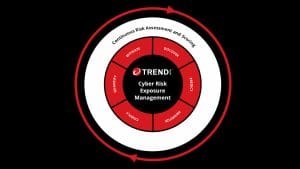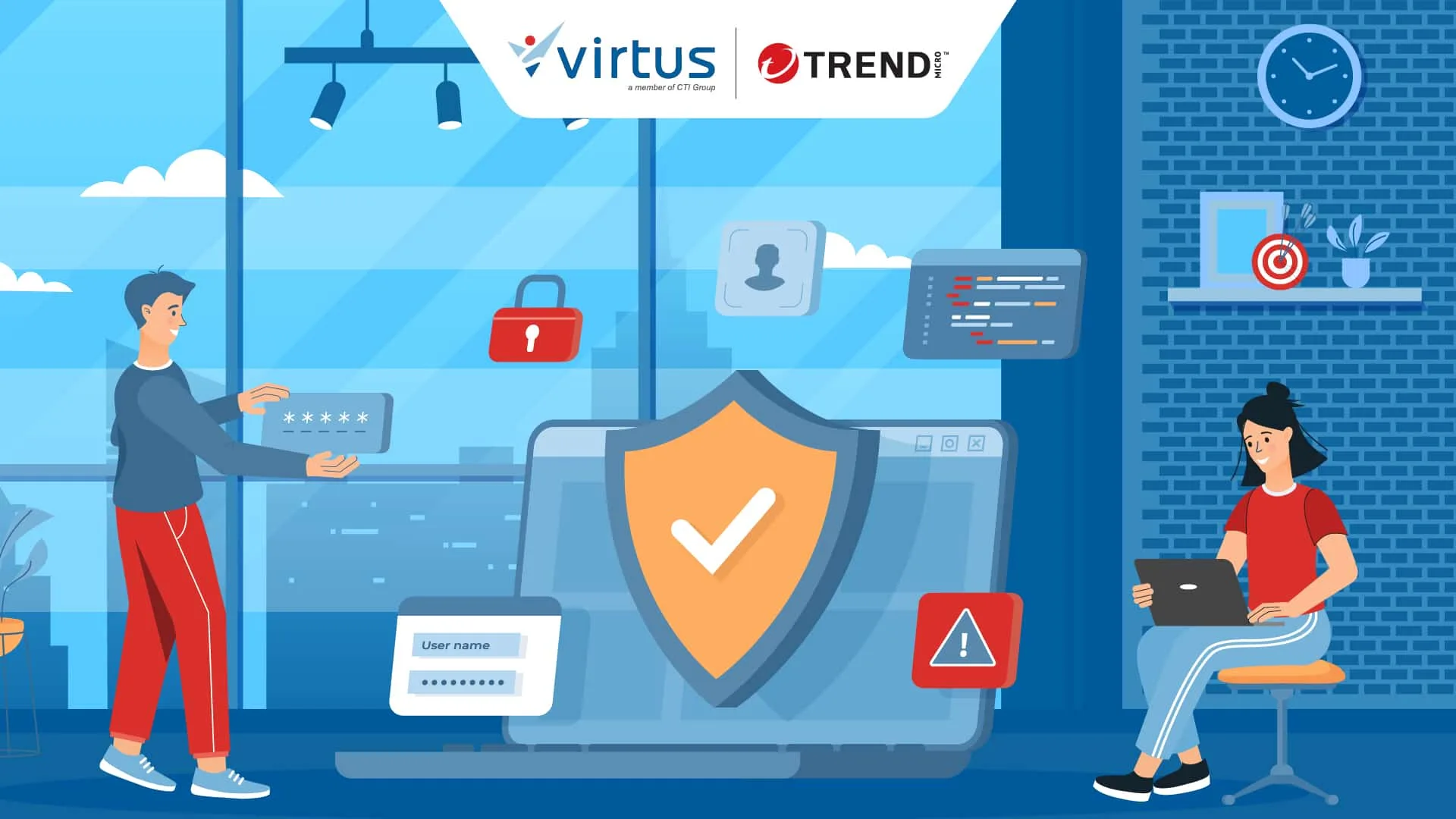Cyber threats are evolving rapidly, becoming harder to predict, leaving organizations increasingly vulnerable to data breaches. According to the IBM Cost of a Data Breach Report 2025, the average cost of a data breach has now reached $4.44 million globally. New vulnerabilities are swiftly exploited, and detection times continue to shrink, highlighting the risks of relying solely on reactive security strategies. This reality positions cyber risk exposure management as the cornerstone of modern cybersecurity resilience.
In this article, you’ll learn how cyber risk exposure management helps organizations reduce ransomware risks and build long-term cyber resilience through practical, actionable strategies.
Why Traditional Security is No Longer Enough
Traditional cybersecurity measures often come into play only after an incident has occurred—from applying patches to conducting manual investigations. Today’s cyberattacks are becoming increasingly aggressive, swiftly exploiting new vulnerabilities, and delayed responses can quickly escalate into significant business losses.
Cyber risk exposure management introduces a more proactive approach. By providing comprehensive visibility and prioritizing critical risks, this strategy allows organizations to detect and address vulnerabilities early, preventing threats from escalating into serious incidents.
Understanding Cyber Risk Exposure Management
Cyber risk exposure management is a strategic approach to identifying, assessing, and mitigating cyber risks across an organization’s entire digital environment. The objective isn’t merely to find vulnerabilities but also to ensure complete visibility, establish clear priorities, and neutralize potential threats before they impact operations.
This approach gives organizations complete control, allowing agility in responding to the ever-changing cyber threat landscape.
The Five Core Pillars of Cyber Risk Exposure Management
Effective cyber risk exposure management stands upon five foundational pillars. These pillars ensure cybersecurity remains dynamic, adaptive, and responsive to continuously evolving digital threats.
1. Complete Visibility
Every digital asset—including cloud environments, on-premises systems, and third-party resources—must be monitored without blind spots. Full visibility enables early detection of vulnerabilities before attackers can exploit them.
2. Contextual Risk Assessment
Risks are evaluated based on asset value, potential business impact, and the latest threat intelligence. This ensures accurate prioritization and targeted risk management efforts.
3. Prioritization and Automated Remediation
The most critical threats are addressed through automated workflows, accelerating responses and significantly reducing the likelihood of successful attacks.
4. Business Reporting and Compliance
Technical insights are transformed into easy-to-understand reports, empowering strategic decisions and ensuring regulatory compliance.
<H3> 5. Security Lifecycle Management </H3>
Every stage—from discovery to mitigation—is fully integrated and continuous. This ongoing approach ensures the business remains prepared for emerging threats.
Attack Surface Management: Your Gateway to Digital Visibility
Attack surface management is the essential first step to ensure all digital assets remain visible and secure. An expanding attack surface—spanning clouds, applications, and third parties—creates vulnerabilities that are difficult to identify and can easily become entry points for cyberattacks. Complete visibility forms the foundation of preventing unexpected security breaches.
This approach allows real-time monitoring of all digital assets, connections, and changes, enabling early identification and remediation of risks before attackers spot them. Attack surface management keeps your organization aware of precisely what needs protection, eliminating blind spots in the digital realm.
Exposure Assessment: Identifying & Prioritizing Risks
Exposure assessment is central to uncovering hidden vulnerabilities across an organization’s digital ecosystem. Beyond simply identifying weaknesses, this process evaluates the operational impact and how swiftly vulnerabilities could be exploited by attackers.
With an effective exposure assessment, organizations can clearly identify which risks demand immediate attention and which can be monitored over time. This ensures security resources are focused on the most critical threats, optimizing protection efforts amidst a constantly changing threat landscape.
The Benefits of a Proactive Cyber Exposure Strategy
Taking a proactive stance toward cyber exposure management opens up significant business advantages. Far beyond reactive responses, proactive strategies position organizations to stay ahead of rapidly evolving cyber threats. Here are the key benefits.
Complete Asset Visibility
Digital assets are continuously monitored, enabling immediate detection of activities or changes, allowing risks to be addressed before they escalate.
Precise Risk Mapping
Risks are mapped and prioritized based on urgency and business impact, ensuring targeted, efficient protection.
Rapid Incident Response
Security teams can quickly act upon early threat indicators, significantly reducing response times and potential damage.
Operational and Cost Efficiency
Security budgets can be strategically allocated to critical areas, lowering incident response costs and operational burden.
Challenges in Implementing Exposure Management
Despite its advantages, implementing exposure management isn’t without hurdles. Organizations commonly face technical, resource-related, and cultural challenges when adopting a proactive security mindset. Key challenges include.
Limited Asset Visibility
Digital assets are often distributed across multiple platforms—cloud services, applications, third parties—creating blind spots and undetected risks.
Fragmented Data and Systems
Incomplete integration between security systems can slow down detection and response times, creating inefficiencies in monitoring and risk assessment.
Shortage of Skilled Resources
A lack of specialized personnel makes it difficult to execute exposure management strategies effectively. Adopting new technologies also requires dedicated training and expertise.
Cultural and Mindset Change
Implementing a proactive approach requires shifting from a reactive to a proactive mindset, often encountering internal resistance due to entrenched practices.
Best Practices for Effective Cyber Risk Exposure Management
To ensure cyber risk exposure management is highly effective, organizations must adopt practical steps tailored to daily operational needs. Below are actionable strategies to strengthen your organization’s cyber defenses.
Automated Asset Discovery
Leverage automated tools to detect and map active digital assets, including shadow IT and third-party devices, speeding up risk identification without manual checks.
AI-Based Risk Prioritization
Implement AI-driven platforms to analyze and prioritize risks using the latest threat data. Machine learning helps rapidly identify and address critical threats.
Integrated Remediation Orchestration
Combine security workflows with SOAR or ITSM systems to automate responses to critical vulnerabilities, enabling structured cross-team collaboration.
Interactive Dashboards for Stakeholders
Create visually intuitive dashboards for presenting risk data and security status, enabling executives and business teams to quickly grasp insights and make informed decisions.
Taking strategic steps is important, but without the right tools, managing cyber risk can only get you so far. That’s where Trend Micro Cyber Risk Exposure Management (CREM) comes in—a powerful, all-in-one solution that provides the real-time visibility, smart insights, and automation today’s organizations need to stay ahead.
Inside Trend Micro Cyber Risk Exposure Management (CREM)
Trend Micro CREM is the only enterprise-grade cyber risk exposure management solution that combines deep AI-driven risk scoring, proactive threat intelligence from the Trend Zero Day Initiative (ZDI), and integrated remediation automation. All these advanced features are seamlessly delivered within the Trend Vision One™ XDR ecosystem, enabling IT teams to monitor all digital assets in real time, detect potential threats early, and strengthen organizational cyber resilience before vulnerabilities escalate into critical incidents.
How Trend Micro CREM Helps Organizations Control Cyber Risk

Source: Trend Micro CREM
By integrating automation, context-driven risk scoring, and streamlined workflows, Trend Micro CREM significantly reduces blind spots, accelerates response times, and effectively lowers cyber risk indices. Supported by intuitive dashboards and simplified reporting, teams—from IT specialists to business executives—can move swiftly and confidently against emerging threats, building measurable cyber resilience.
Read More: Learn Why Industry Leaders Trust Trend Micro Vision One for Strategic Cybersecurity
Upgrade Your Cybersecurity with Virtus
Backed by extensive experience and a specialized cybersecurity team, Virtus Technology Indonesia (VTI), part of the CTI Group, helps businesses seamlessly implement Trend Micro Cyber Risk Exposure Management (CREM). From consultation to deployment and ongoing operational support, Virtus ensures a smooth transition towards proactive cybersecurity.
Contact Virtus today and discover how Trend Micro CREM can position your business confidently against today’s evolving digital threats.
Author: Danurdhara Suluh Prasasta
CTI Group Content Writer

